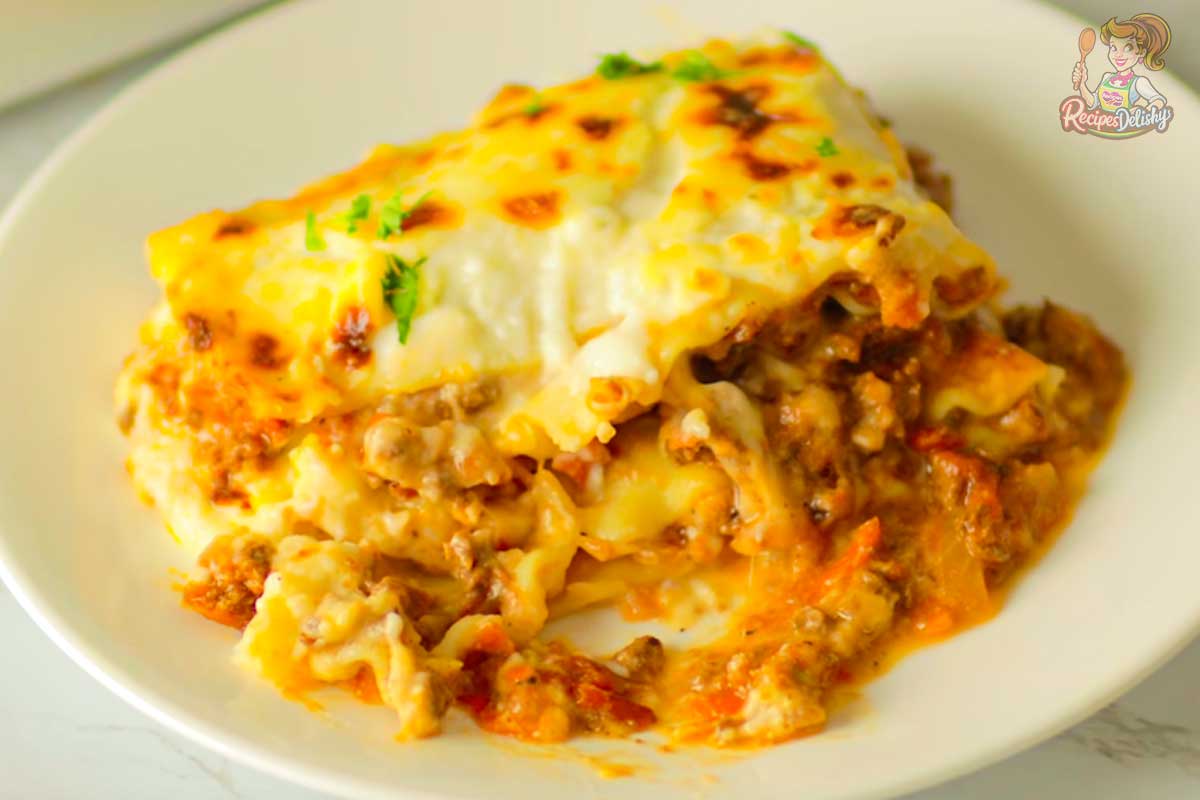How Many Layers of Lasagna is Best?
When it comes to crafting the perfect lasagna, every layer counts. This classic Italian dish has been a staple in households around the world, not only for its delicious flavor but also for its comforting, hearty nature. Whether you are a seasoned chef or a home cook, understanding the ideal number of layers in lasagna can elevate your dish from good to unforgettable.
Lasagna, a beloved Italian dish known worldwide, consists fundamentally of alternating layers of pasta, sauce, and cheese. But the question on every home cook’s mind is: how many layers make the best lasagna?
The Structure of Traditional Lasagna
Traditional lasagna is made up of several key components: pasta, sauce, cheese, and fillings such as meat or vegetables. Each layer serves a specific purpose and contributes to the overall taste and texture of the dish.
- Pasta Layers: The foundation of any lasagna, the pasta should be al dente, providing a chewy texture that holds up under the layers of sauce and cheese. Typically, three to four layers of pasta are ideal.
- Sauce: A robust tomato sauce enriched with herbs like basil and oregano is essential. The sauce not only provides moisture but also binds the layers together while adding flavor.
- Cheese: Typically, a combination of ricotta, mozzarella, and Parmesan is used. Cheese layers are crucial for achieving the creamy, gooey texture that lasagna is famous for.
- Fillings: This can vary from ground meats to a medley of vegetables like spinach, zucchini, and mushrooms. The fillings should be well-seasoned and cooked before layering to avoid excess moisture in the final dish.
The Importance of Layering
Layering lasagna is an art that balances the texture and flavors of pasta, sauce, and cheese. Traditionally, lasagna is built with three to four layers, as this allows each layer to be distinct and not too dense. More layers often mean thinner layers, which can lead to a drier lasagna if not managed correctly.
Optimal Number of Layers: A Deep Dive
While the traditional lasagna typically features three to four layers of pasta, the total number of layers will depend on the depth of your baking dish and your personal preference for each component’s thickness.
- Three-Layer Lasagna: This is often adequate for a standard dish, providing a good balance between pasta, sauces, and fillings. Each layer can be generously sized without making the dish too bulky.
- Four-Layer Lasagna: A four-layer lasagna allows for a more substantial meal, ideal for larger gatherings. This setup enables more room for extra cheese and fillings, enhancing the flavors and textures.
- Five or More Layers: For a truly decadent lasagna, more than five layers can be used, especially if you have a deep baking dish. However, it’s crucial to maintain the integrity of the dish by ensuring that each layer is not overly thick, which could result in a less cohesive and harder to serve lasagna.
Ingredients: The Building Blocks of Lasagna
Lasagna is more than just pasta—it’s a symphony of flavors that requires quality ingredients to truly shine. Each component plays a crucial role in the overall texture and taste of the dish.
- Pasta: Opt for high-quality durum wheat pasta sheets that can handle the weight of the fillings without becoming soggy. Some prefer pre-cooked sheets for convenience, while others swear by traditional, uncooked sheets that absorb the sauces beautifully as they bake.
- Meat: A classic lasagna often features a hearty Bolognese sauce. Ground beef or pork, simmered slowly with onions, garlic, and herbs, creates a rich and flavorful base. Vegetarians might substitute lentils or finely chopped mushrooms to mimic the texture and savory profile of meat.
- Sauce: The sauce binds all the ingredients together. A well-seasoned tomato sauce, enriched with fresh basil, oregano, and a touch of sugar to cut the acidity, is fundamental. For a creamy variant, béchamel sauce is used, especially in certain regional variations of lasagna.
- Cheese: Ricotta cheese provides creaminess, while mozzarella adds stretch and a delightful gooey texture. Parmesan or pecorino, finely grated, impart a sharp, salty note that enhances the overall depth of the dish.
- Vegetables: For those who prefer a lighter lasagna, layers of spinach, zucchini, and eggplant make excellent additions. Roasting these vegetables beforehand can enhance their natural flavors.
- Herbs and Spices: Don’t underestimate the power of seasoning. Basil, oregano, and thyme are essential, while a pinch of nutmeg in the béchamel sauce can transform the flavor profile.
Step-by-Step Recipe for a Five-Layer Lasagna
Creating a five-layer lasagna involves a balance of components and seasoning. Here’s how to do it:
- Preparation of Ingredients: Begin by preparing your sauces. Cook the meat until browned and then simmer with tomato sauce, herbs, and spices. Prepare your béchamel sauce in a separate pan, gently whisking milk into a roux of butter and flour.
- Assembly: Start with a thin layer of tomato sauce at the bottom of your baking dish to prevent sticking. Place your first layer of pasta sheets over the sauce.
- Building Layers: Spread a portion of the meat sauce over the pasta, followed by dollops of ricotta and a sprinkle of mozzarella and Parmesan. Repeat this process until you have built five layers, finishing with a layer of pasta topped generously with sauce and a final sprinkle of cheeses.
- Baking: Cover with foil and bake in a preheated oven at 375 degrees Fahrenheit for about 25 minutes. Remove the foil and continue to bake for another 10-15 minutes or until the top is bubbly and golden.
- Resting: Allow the lasagna to rest for at least 15 minutes before slicing. This resting period helps the layers set and makes serving easier.
Tips for Customizing Your Lasagna Layers
Customizing your lasagna allows you to tailor the dish to your taste preferences and the ingredients you have on hand.
- Experiment with Cheeses: Beyond ricotta, mozzarella, and Parmesan, consider adding gorgonzola for a punch of flavor or slices of provolone for a different texture.
- Add Layers of Flavor: Introduce slices of prosciutto or pepperoni between layers for added saltiness and depth. A layer of pesto can introduce a fresh, herbaceous quality.
- Vegetable Variations: Incorporate layers of roasted or grilled vegetables such as bell peppers, mushrooms, or artichokes for a Mediterranean twist.
- Spice It Up: For those who enjoy a bit of heat, adding crushed red pepper flakes to the sauce or a layer of spicy sausage can elevate the dish.
Layering Techniques for the Perfect Lasagna
To achieve the best lasagna, layering is key. Start with a spoonful of sauce at the bottom of the dish to prevent sticking. Then, layer your pasta sheets, slightly overlapping them for stability. Spread a thin layer of your chosen fillings, followed by a sprinkling of mixed cheeses. Repeat these steps, finishing with a generous layer of cheese on top.
Cooking Tips for Ideal Lasagna Consistency
- Pre-cook Pasta: Slightly undercook your pasta sheets if boiling them first. They will continue to cook in the oven, absorbing flavors from the sauce.
- Resting Time: Allow your lasagna to rest for about 15 minutes after baking. This resting period helps the layers settle and makes slicing easier.
- Oven Consistency: Bake your lasagna in a preheated oven at 375 degrees Fahrenheit. Cover with foil to prevent excessive browning on top, removing the foil in the last ten minutes to achieve a deliciously golden top layer.
Expert Opinions and Cultural Variations
Lasagna varies widely across different regions of Italy and the world, influenced by local ingredients and cultural preferences.
- Italian Chefs’ Insights: In Italy, some chefs emphasize the use of specific regional ingredients like buffalo mozzarella from Campania or fresh pasta sheets from Emilia-Romagna. They often stress the importance of simplicity, allowing the quality of the ingredients to shine through.
- Global Takes: Outside of Italy, lasagna takes on various forms. In Greece, moussaka is a similar concept but includes layers of eggplant and a custard topping. In Mexico, some variations replace pasta sheets with tortillas and traditional Italian fillings with spicy meats and chilies.
- Cultural Adaptations: Vegetarian and vegan lasagnas are gaining popularity, using substitutes like tofu ricotta or cashew cream. These adaptations make lasagna accessible to a wider audience while maintaining its comforting essence.
Conclusion
Lasagna is a beloved dish that can be adapted to suit any taste or occasion. While the perfect number of layers in lasagna can vary, aiming for three to four ensures a delightful balance between all components, resulting in a dish that’s both satisfying and manageable. Remember, the key to an exceptional lasagna lies in the quality of ingredients, proper layering, and patient cooking.

